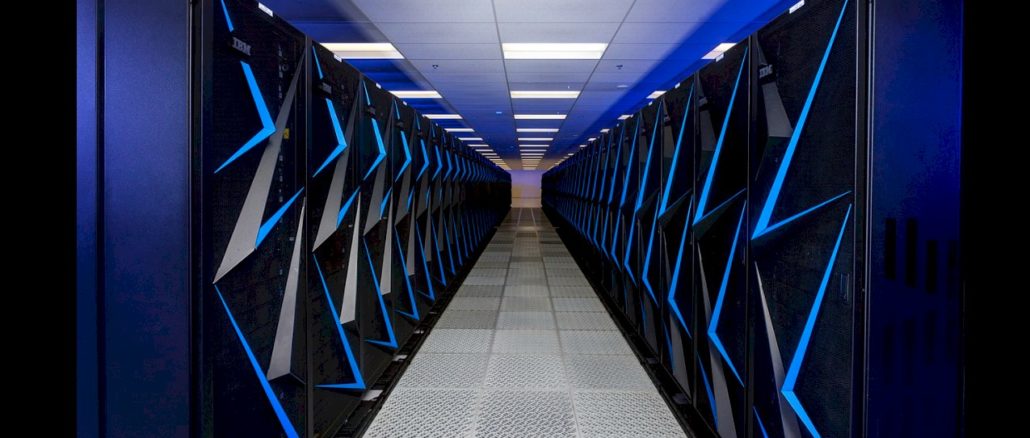
It is frustrating sometimes how IT vendors talk about themselves, particularly when it comes to public companies and those rare few who report financial results even though they are privately held. The summary data is compiled to give Wall Street and other investors the rosiest possible view of the company and a lot of detail that actually describes the business is missing. As such, we are always playing a kind of mathematical cat and mouse game, trying to catch the truth before it disappears into a hole in the baseboard.
IBM is no exception, particularly as it is trying to reposition itself after acquiring Red Hat for $34 billion back in October 2018 and spinning off managed infrastructure division NewCo – now called Kyndryl – by the end of this year. That hosting and outsourcing business might generate $19 billion in sales, against the remaining core IBM’s $59 billion, but not matter how Big Blue tries to avoid saying it, that business represents the past, a legacy, and what IBM very much wants to do is reposition the new Red Hat overlay on top of its System z and Power Systems platform businesses and its IBM Cloud (formerly known as SoftLayer), all supported by its vast systems software stack (including database, transaction processing, file system, security, and application development software), as the future. Ironically, we think that IBM is one of the largest consumers of its own systems and related systems software, and when this Kyndryl deal is finally done, will probably be Big Blue’s largest customer.
That’s not an accident, or surprising. It’s what happens when companies can’t get rid of legacy systems – and really don’t want to – but also don’t want to manage them anymore, either. Legacy is not a growing business, but as IBM so aptly demonstrates, it sure as heck can be a profitable one if you manage it down correctly. And Big Blue sure knows how to do that, and the secret is that legacy platforms carry legacy prices and can be very profitable. But, as IBM’s shrinking revenue – through myriad spinoffs and organic decline – over the decades shows, that is not a very sexy story to try to sell Wall Street. Hence, IBM is jettisoning at least one part of its legacy business and creating a big customer for the remaining pieces it is keeping. It’s not the stupidest move we have ever seen, but we think IBM could have come up with a better, more relevant name, not just pulled some letters out of a Scrabble bag.
We do our best to tease out what IBM’s underlying systems business really is as it announces its financial results each quarter, and in recent quarters we have added Red Hat’s Linux operating system, OpenShift Kubernetes container controller, and other infrastructure to the mix. IBM’s own categories obscure as much as they help, with names that try to make legacy software sound shiny and new. Cloud & Cognitive Software includes some pretty old and pretty expensive IMS and DB2 databases as well as CICS transaction monitoring and RACF security on mainframes. (We are old enough to not have to look that stuff up.) It might be more accurate, now that we think on it, to have broken IBM’s financials into HostCo (what it is calling Kyndryl) and NewCo and OldCo. OldCo is that legacy software stack and NewCo is data analytics and database and Red Hat software running on Power Systems, System z, and X86 systems from others that Big Blue no longer sells.
What IBM wants, when this is all said and done, is a company that is about $60 billion big and actually growing. The company got a taste of growth in the first quarter of 2021, and we think that the hosting and outsourcing business within its Global Technology Services business helped out a bit – something the company did not talk about with Wall Street but we can see a bump. This might be customer pull, or it might be a vendor making such attractive offers that outsourcing and hosting customers cannot refuse. There is no way for us to know. But it seems peculiar to us that IBM’s System z mainframe business rose by 49 percent in Q1 2021 after a very impressive 60 percent growth in the year-ago quarter. Sales of systems (meaning Power and z servers and storage) internally at IBM to other divisions outside of Systems Group rose by 27.7 percent to $189 million, but external sales of servers and storage – meaning to real customers outside of IBM who were buying or leasing the iron – rose by 4.3 percent to $1.43 billion. Some of that internal sales of systems stuff were for the IBM Cloud, which is hosting Power and z machinery these days.
All we are saying is that the growth rate for internal sales was way higher than for external sales, which is peculiar. It could be pent up customer demand, particularly among the banking, insurance, retail, and distribution customers who might have put off expanding their capacity during the coronavirus pandemic. In any event, that incremental hardware capacity sold pushes through proportionately large sales of systems software, which on the mainframe is charged monthly under a subscription model that predates Miguel Bezos, the father of the founder of Amazon, getting his first zit.
What’s old is new again. Or NewCo. Or Kyndryl, we suppose.
In the quarter ended in March, IBM’s overall revenues rose by 0.9 percent to $17.73 billion, the first time the company has grown revenues in two years. Here is the breakdown in sales by the traditional categories that IBM has used since 2014:
The Cloud & Cognitive Software unit, where most of the interesting new software such as the entire Red hat portfolio and IBM’s CloudPak stacks as well as some old stuff excepting legacy platform operating systems (which are counted in Systems Group), had sales of $5.44 billion, up 3.8 percent, and IBM is quite pleased that it has now done over 3,000 customers that have chosen the OpenShift container platform for enterprise deployment, tripling the installed base since the company acquired Red Hat. This is how that deal is supposed to work. Separately, IBM says that the Red Hat stack grew sales by 15 percent, which would put it at around $1.19 billion.
Global Business Services posted sales of $4.23 billion, up 2.4 percent. Global Technology Services, which will be largely transferred to Kyndryl excepting the break-fix and support revenue stream from IBM’s own products, had a 1.5 percent decline to $6.37 billion, while Global Financing, which loans resellers dough to buy inventory from Big Blue as well as leasing for customers, had a 19.7 percent decline to $240 million in Q1 2021 as IBM ceases financing on gear made by others.
As you well know, we think IBM is managing down the decline in its legacy systems business while it is trying to ramp up its Red Hat stack and pull some hardware sales on Power and z along with that where possible. Every quarter, we go through the IBM numbers and try to allocate sales within each IBM group for the basic systems – servers, storage, operating systems, tech support, and financing – to get a sense of the true, underlying IBM systems business. Here is how it looks over time through the March 2021 quarter:
We discussed the nature of the vertical IBM platform business (meaning it is an entire stack, like Apple has) and the horizontal Red Hat business (meaning it is several software layers that run on other people’s hardware for the most part) back in January, so we are not going to go through that all again. We will point out that IBM’s overall systems business did better than we might expect, in absolute dollars booked, and the Red Hat business actually had a sequential decline, in absolute dollars. A very rare thing in recent years, as you can see from the smoothness of that Red Hat revenue curve above. This could be a concern, it could be nothing. We shall see.
Let’s peel apart that “real” IBM systems business shown above. Here is the revenue stream and gross profits, as best we can figure, for that vertical IBM platform business, which has a Power stack and a z stack:
That “real” IBM systems business accounted for $5.78 billion in sales, down 1.36 percent and comprising 32.6 percent of total sales. We estimate that this “real” systems business had gross profits of $1.91 billion, or about 33 percent of revenues. The software has very high margins, the hardware – not so much. But you can’t have the one without the other.

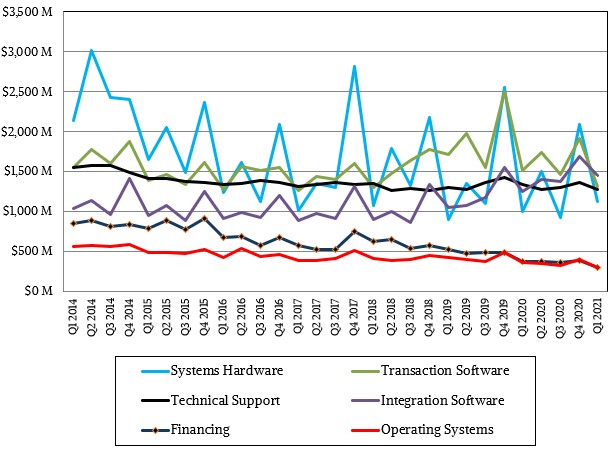
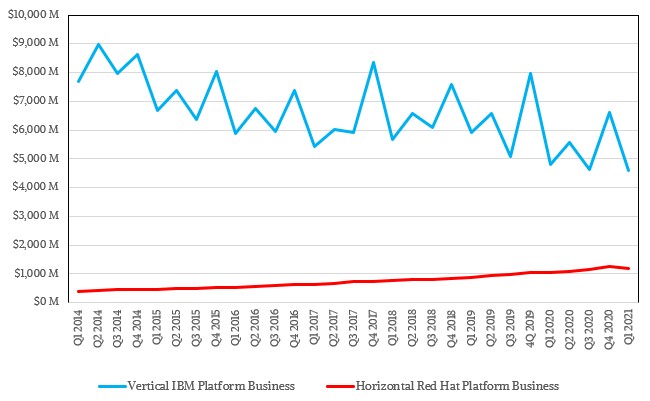



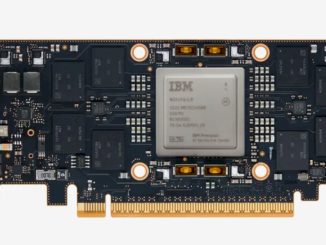
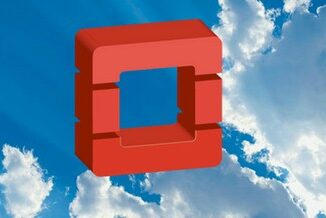
Be the first to comment